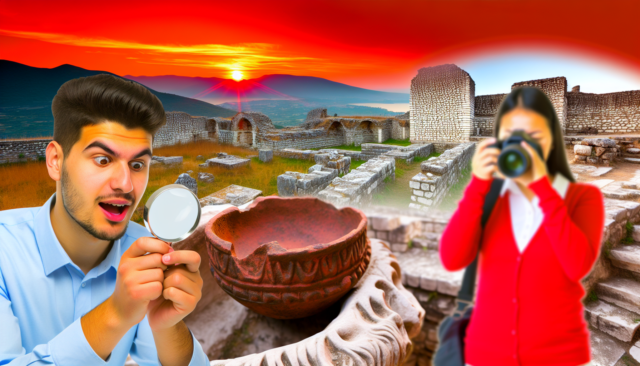
Exploring Albania’s Ancient Ruins: A History Buff’s Paradise
Nestled along the Adriatic and Ionian Seas, Albania is a hidden gem in the Balkans, rich in history and teeming with ancient ruins waiting to be explored. Often overshadowed by its more popular neighbors like Greece and Italy, Albania offers a unique perspective on ancient civilizations and their lasting legacies. For history buffs, the country is a treasure trove of archaeological sites, each revealing a glimpse into its storied past.
A Glimpse into Albanian History
Albania’s history is a tapestry woven from influences of Illyrian, Roman, Byzantine, and Ottoman cultures. The land is dotted with the remnants of these civilizations, each left behind to tell the tale of the people who once inhabited the region. The country’s strategic location along trade routes has made it a crossroads for many cultures and empires throughout history.
Key Archaeological Sites to Explore
1. Butrint: A UNESCO World Heritage Site
One of the crown jewels of Albanian archaeology, Butrint is an ancient city that has seen continuous habitation from the Greek period through to the Ottoman era. Located near the Albanian-Greek border, the site features remarkable ruins, including a well-preserved theater, a basilica adorned with stunning mosaics, and an ancient city wall that offers panoramic views of the surrounding landscape. Visitors can wander through the lush park that encircles the ruins, immersing themselves in the serenity of nature intertwined with history.
2. Apollonia: The City of the Muses
Founded in the 6th century BC and named after Apollo, the Greek god of music and art, Apollonia holds significant historical relevance. The site is famous for its impressive remains, including a magnificent temple, a theater, and a well-preserved agora. The onsite museum houses artifacts that provide insight into daily life and trade in this important center of culture. A stroll through Apollonia is a journey through time, with ancient ruins framed by olive groves and rolling hills.
3. Gjirokastër: The Stone City
A UNESCO World Heritage Site, Gjirokastër is often referred to as the "City of Stone" due to its distinctive Ottoman-era architecture. While not strictly an ancient city, its impressive castle offers historical depth, housing a museum and various artifacts from Albania’s communist past, including military memorabilia. The fortress provides a stunning view of the Drino Valley and is an excellent example of the blending of cultures over centuries.
4. Krujë: The Mountain Fortress
Krujë is known for its historical significance as the center of resistance against the Ottoman Empire led by the national hero, Skanderbeg. The Krujë Castle complex includes the Ethnographic Museum located in Skanderbeg’s former residence, where visitors can learn about traditional Albanian life and the country’s struggles for independence. The castle walls offer panoramic views of the surrounding countryside and provide a sense of the strategic importance of this location.
5. Berat: The Town of a Thousand Windows
Often referred to as the "City of Spirits," Berat is famed for its stunning Ottoman architecture and historical landmarks, including the Berat Castle, which dates back to the 13th century. Within the castle, visitors can find churches, mosques, and a museum, telling the story of Berat’s multicultural heritage. The city itself is a picturesque mix of cobbled streets, white-washed houses, and vine-draped balconies.
Embracing the Under-the-Radar Adventure
While many travelers flock to renowned European destinations, Albania offers an off-the-beaten-path experience that allows for a more intimate exploration of its history. The relatively low tourist traffic at its archaeological sites means that visitors can often wander through these ancient ruins without the crowding typically found elsewhere in Europe.
Conclusion
For history enthusiasts and adventurous travelers alike, Albania’s ancient ruins provide a captivating glimpse into the past. From the well-preserved remnants of Butrint to the Ottoman charm of Berat and Gjirokastër, the country is a history buff’s paradise waiting to be discovered. As tourism continues to rise in Albania, now is the perfect time to explore these ancient treasures and step into a world where history comes alive. Whether you’re wandering through the echoes of ancient civilizations or soaking in the panoramic views from a mountain fortress, the journey through Albania’s past is sure to leave a lasting impression.













